Cemetery Monuments Bélanger
From Déjeuner-causerie May 10, 2017 by Mr Bruno Bélanger
A little known industry that we pay little attention to is the business of making cemetery stones or monuments. Where are they made and how are they made? This particular subject is not one that is very often brought up in conversation, it is ignored and people just are not comfortable talking about this subject. The reason that people do not want to talk about this subject is because it consists in talking about death and associated discomfort and memories. However, when Bruno Belanger came and gave us a talk about funeral monuments from Monuments Belanger, at our continuing breakfast lecture series, we actually found the subject to be very interesting.
The entire history of the Monument Belanger workshop began with Camille Gosselin, husband of Pierrette Provencher, who worked at the granite quarry in Stanhope. Mr. Gosselin lived and worked in Stanhope and, during the course of his working career, he conceived of the idea of putting together a shop where he could make monuments. He had worked with granite and understood how to use the material and was confident that he would be able to design monuments. He bought a parcel of land on August 9, 1960 from Leopold Desbiens, husband of Odelide Bourassa, on Route 147. This property was adjacent to land to the north owned by Emile Favreau. The lot measured 250 X 150 feet and was situated on Route 147 and became the property of Mr. Gosselin and his plans to start up a business. This address is 252, Route 147 and became part of 590, Route 147 South, at Dixville.
And so, Camille Gosselin began his career. He cut and engraved monuments and began to make sales. Sizing and engraving monuments is not the easiest of jobs. Each piece of granite is composed of an uncut piece of working stone weighing between 700 to 800 pounds. The engraving of the monuments is the work of a craftsman.
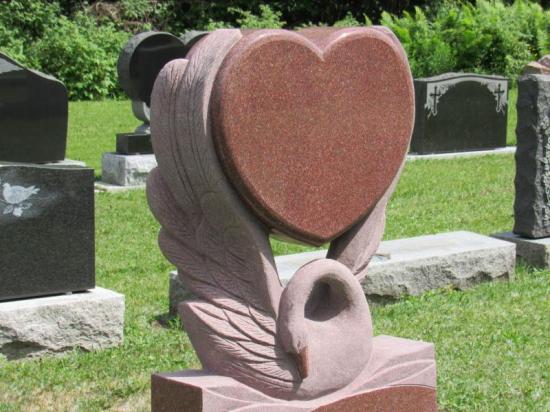
It is necessary to draw up the theme and necessary letters delicately and with precision on a rubber template which then is ready to be cut expertly in preparation for the reproduction on the monument. This work requires many hours to produce the rubber layer. Once this step is done, it is necessary to reproduce the theme and letters and to exactly cut out the rubber template, then reproduce the image by sandblasting the granite. This part of the procedure requires a great deal of manipulation throughout the task. We can now mention that today the work to produce the pattern and letter models is carried out by a design technician who produces the element on a type of carbon paper which is then copied onto the rubber template, then completion is made in the regular manner.
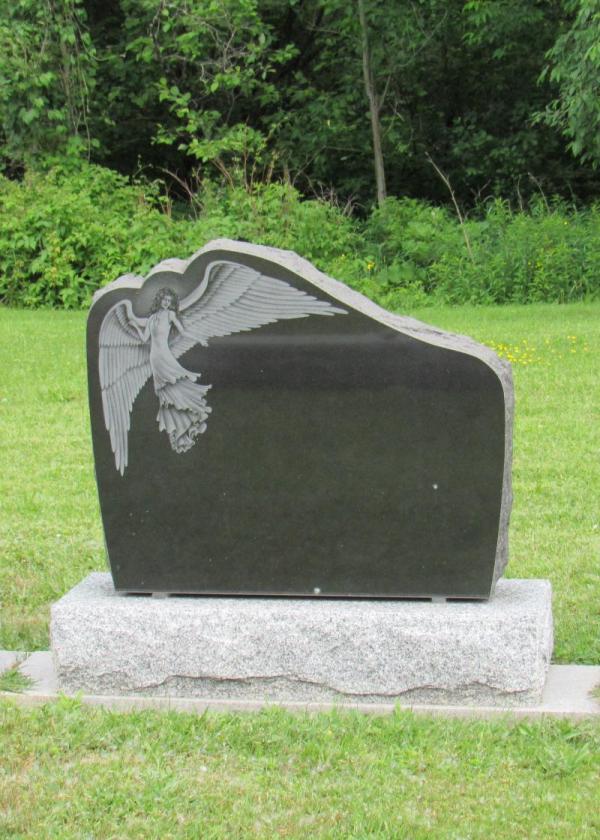
All this work is long and requires precision on an unforgiving material of considerable weight.
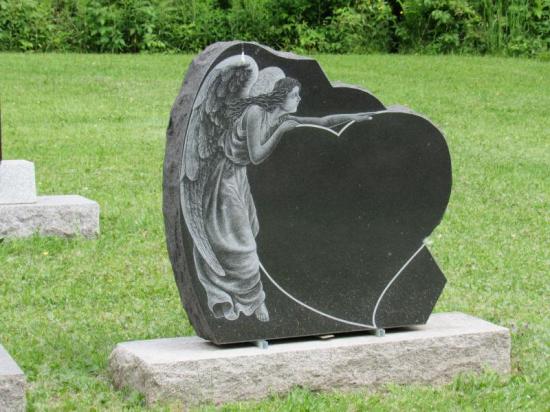
The work that Mr. Gosselin did required a workshop, a place composed of different tools in order to handle these heavy pieces of granite. So, he therfore built a shop measuring 28 x 36 feet with the help of Jean-Baptiste Houle. This shop was built using railroad rails when required. Inside could be found two rooms known familiarly as the ''Sandblasting Rooms'' set aside for that purpose. He also used a bridge crane, beams and rails measuring 30 feet long to assist in moving the granite. Ingenuity and hard work were essential qualities in order to achieve success.
Photo quelques monuments
On February 23, 1990, Gaetan St. Pierre bought Mr. Gosselin's shop. On July 7, 1993, Lucien Belanger bought the business and he and Mr. St. Pierre would go on to work together here for over twenty years. And, in turn, Bruno Belanger bought the business. Several improvements were made to the building. The roof, the siding, and the windows were replaced in 2015-2016. All of these projects were done to upgrade the site and to show a modern renewal in the appearance of the building.
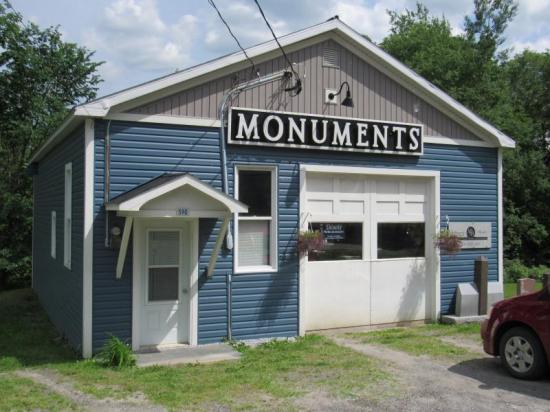
Once the work on the workshop was completed, it was back to the business at hand, the difficult task of positioning the monument in the cemetery. Let us not forget that these monuments were very heavy and just could not be moved by human force. Mr. Belanger and Mr. St. Pierre used a system of wooden blocks and tackles to produce leverage in the movement of the monument. The effect of this would be that the monument could be raised or lowererd in positioning. Mr. Gosselin used a wheeled type of wagon specifically built to transport the monument to the cemetery.
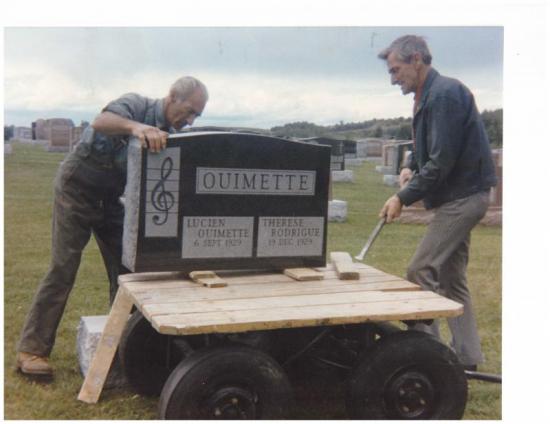
The wagon would hold the base and the monument which would be loaded very carefully through great effort and skill by the two men. When Bruno Belanger bought the business, he did research on what was available in equipment such as hydraulic lifts and transports. He went ahead and installed this technology to improve working conditions at the shop. He could now transport and install monuments at the cemetery all by himself.
We are now experiencing a new process and practice following a death. Incineration of the body is another avenue of conservation of the ashes. Monuments or small plaques to the deceased are often requested to be placed nearby the remains. It is important to respect the deceased by leaving a tangible record of their lives.
The Belanger Monuments business has been in operation for many years and the people involved and their methods of working are worth having a look at. It is also important to note that all the people who worked here were all local people.
Photo Monument annonce
From Déjeuner-causerie May 10, 2017 by Mr Bruno Bélanger



